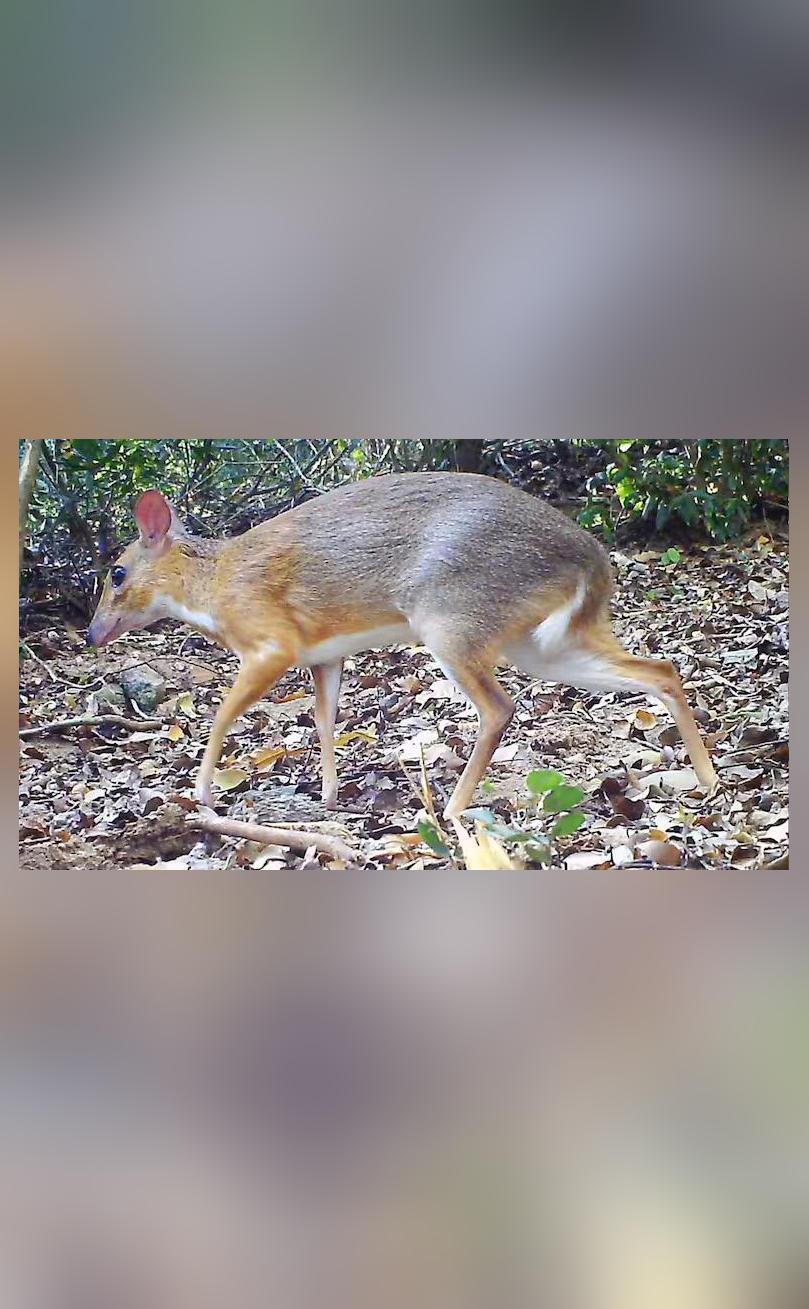
Tiny Hoofed Mouse Deer, Thought Extinct, Spotted After 30 Years
In a remarkable discovery, a team of researchers has spotted the tiny, rabbit-sized, silver-backed chevrotain, also known as the two-tone mouse deer, in a remote Vietnamese forest after being unseen for nearly 30 years. The elusive creature, which was considered extinct, has reappeared, sending shockwaves through the scientific community.
The chevrotain, which measures about the size of a rabbit, was first discovered in the 1990s in the forests of central Vietnam. However, despite extensive searches, it had not been seen since the early 1990s, leading conservationists to believe that it had gone extinct.
The rediscovery of the chevrotain is a significant breakthrough in conservation efforts, as it highlights the importance of preserving biodiversity and the need to continue searching for and protecting endangered species.
The discovery was made by a team led by Global Wildlife Conservation, a non-profit organization dedicated to protecting endangered species and their habitats. The team, which included researcher An Nguyen, set up cameras in a remote forest in Vietnam and captured over 2,000 photos, some of which showed the chevrotain alive.
“I was surprised and joyful to find the animal,” said Nguyen, who has been working on the project for several years. “We had almost given up hope of finding it, but the cameras captured some amazing images.”
The chevrotain is a small, nocturnal animal that is native to the forests of central Vietnam. It has a distinctive silver back and a brown front, which gives it its two-tone appearance. It is a herbivore, feeding on leaves, fruits, and flowers, and is thought to be an important part of the forest ecosystem.
The rediscovery of the chevrotain is a significant conservation success, as it highlights the importance of preserving biodiversity and the need to continue searching for and protecting endangered species.
“The rediscovery of the chevrotain is a testament to the power of conservation efforts and the importance of preserving biodiversity,” said Lukas Jelacic, a conservation biologist at Global Wildlife Conservation. “It’s a reminder that even the most unlikely and elusive creatures can still be found, and that conservation efforts can make a real difference.”
The discovery of the chevrotain has also raised new questions about the conservation status of the species. While the team was thrilled to see the animal, they also recognized that it is still a vulnerable species that requires protection.
“We need to continue to monitor the population and ensure that it is protected from threats such as habitat loss and hunting,” said Nguyen. “We also need to work with local communities to ensure that they are aware of the importance of preserving the species and its habitat.”
The rediscovery of the chevrotain is a significant breakthrough in conservation efforts, and it highlights the importance of preserving biodiversity and the need to continue searching for and protecting endangered species. The discovery is a testament to the power of conservation efforts and the importance of preserving biodiversity.
Source:






